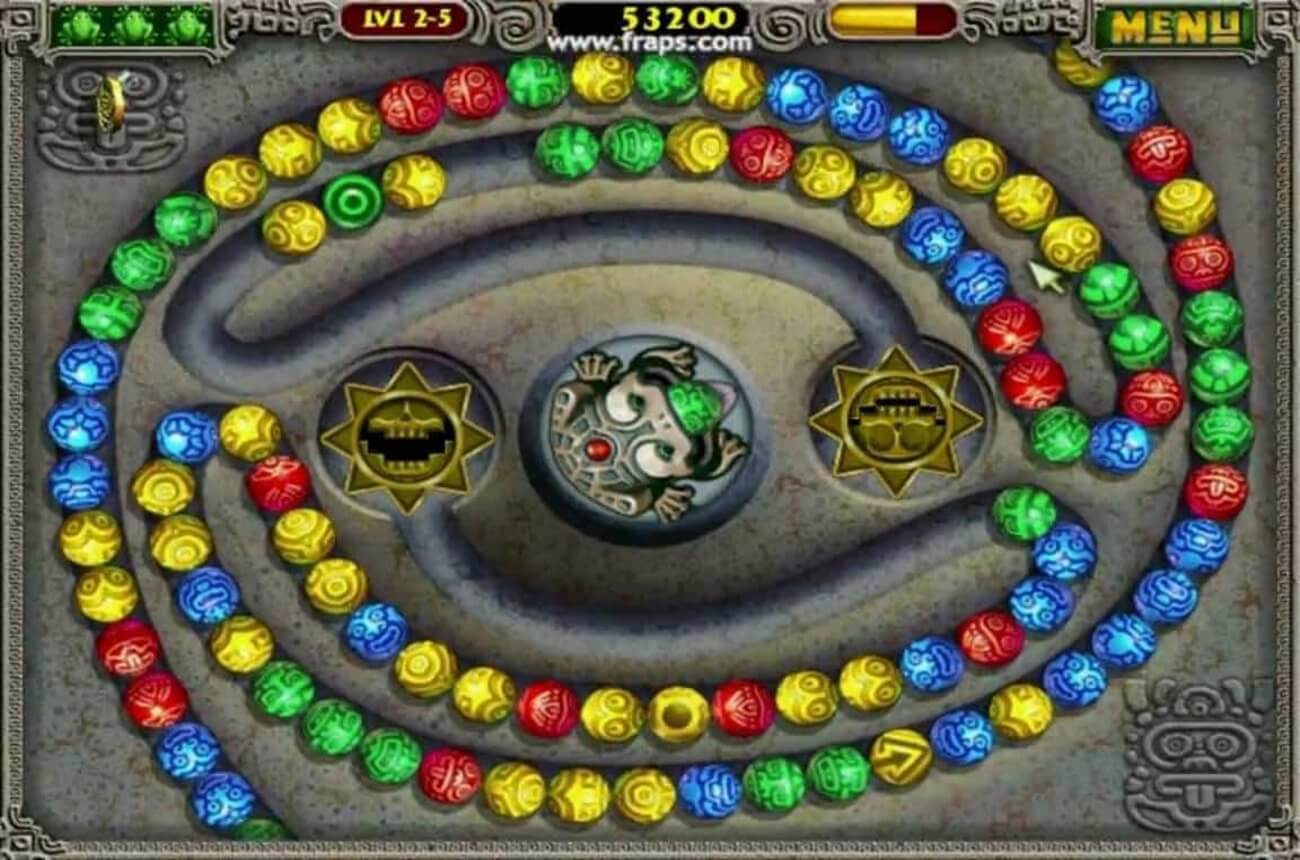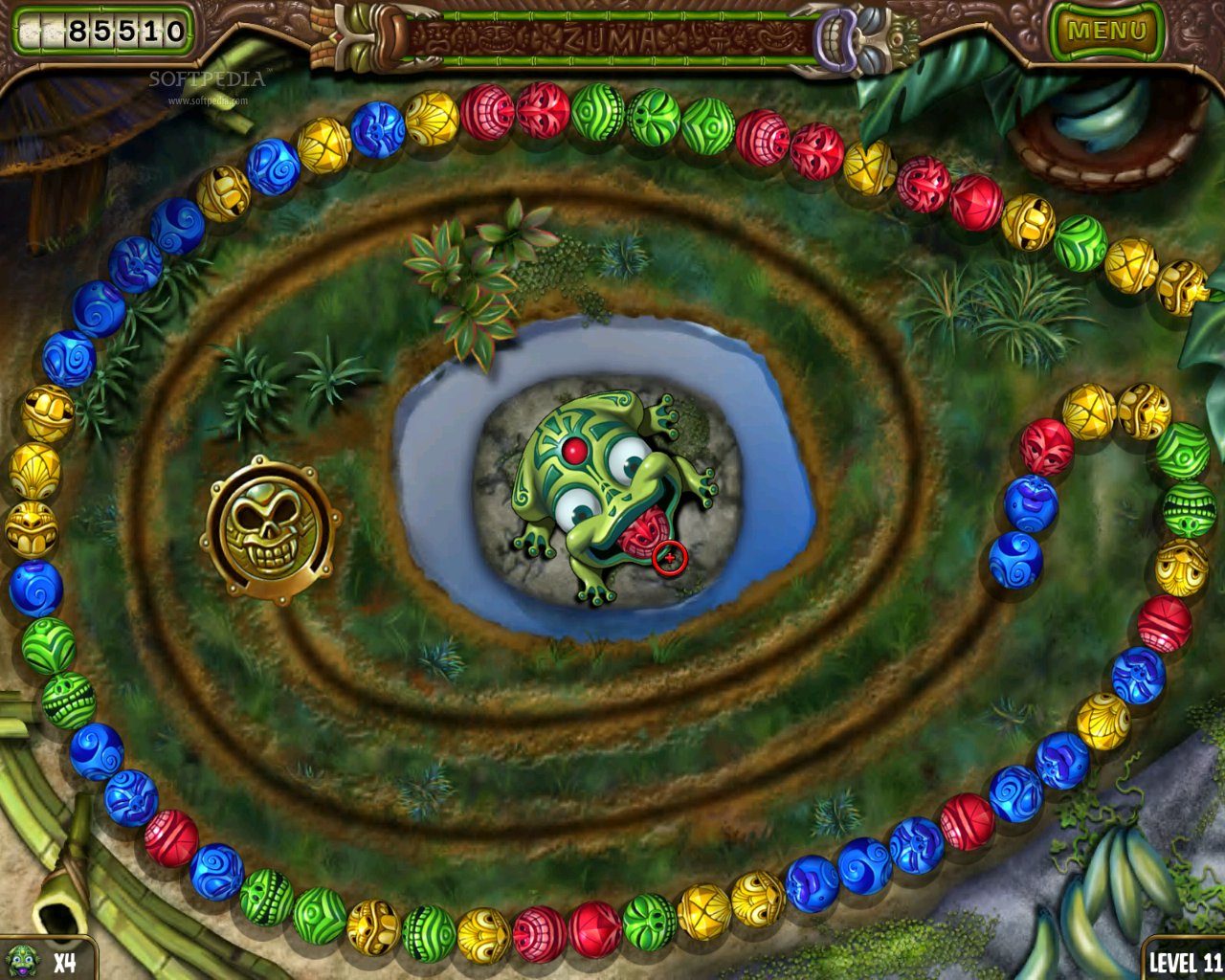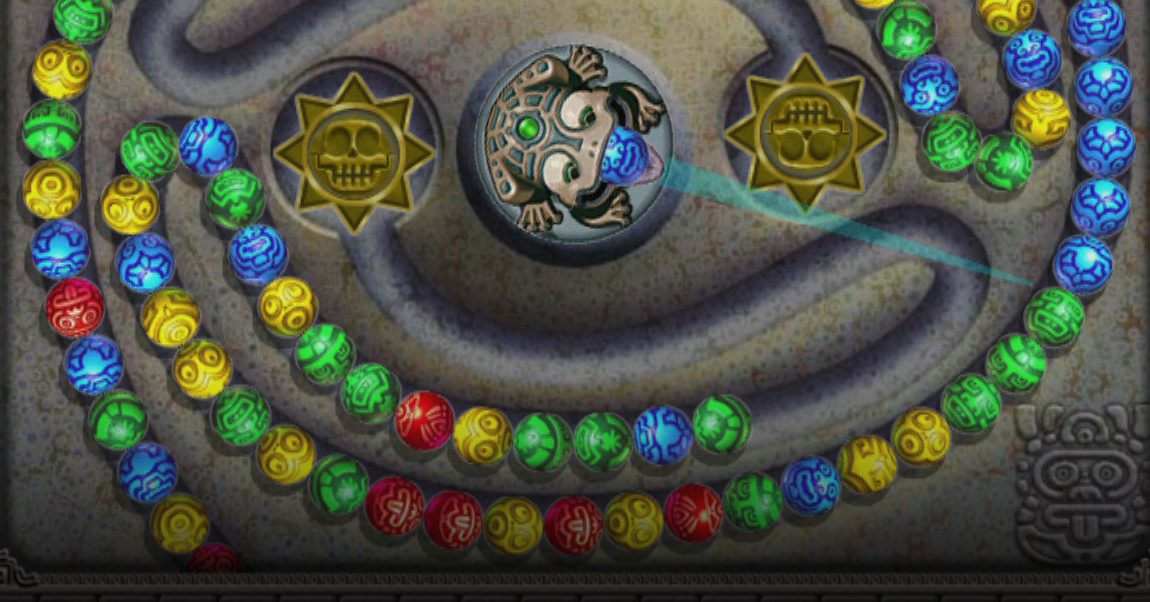

The backwards ball pushes the furthest-out chain (depending on if all of the balls are connected) backwards for a short length of time. Time bonuses are also awarded if a player completes the level within ace time - ranging from thirty seconds to four minutes depending on the level.įour different types of power-ups show up in balls, which can be activated by exploding the ball with the power-up. There are bonuses for collecting coins (usually through gaps), for causing explosions through gaps of other balls, and for having a streak of always causing an explosion with each consecutive ball (coins and chain bonuses are a quick way to fill the bar). The level is completed when after the bar is filled, the player eliminates all of the balls on the screen. When three or more of the same color come in contact, they explode, possibly triggering other explosions as part of a chain reaction. To prevent the balls reaching the Skull, the player can eliminate the balls by firing a colored ball from the stone frog idol's mouth towards the chain of balls that will continue to push forward until the player fills the yellow bar, which is when the balls will stop producing off-screen. As soon as one ball reaches the skull, the rest follow and the player loses a life. The player can carry two balls at a time and can switch at any time. The objective of Zuma is to eliminate all of the balls rolling around the screen along a given path, with other balls (the path is clearly visible in all of the levels except the last level), before these balls reach the yellow skull structure, which will open to varying degrees as a warning of oncoming balls.

This makes the game less enjoyable, especially for the more competitive players.The following section was copied from Wikipedia. Of course, as your response and aim improve over time, the latter stages start to become less challenging, making the game boring in the long run. From the first to the last level, you are tasked with the same objective of eliminating the balls. Unfortunately, there’s not much difference between the two game modes, in terms of difficulty, gameplay, or features.Īlso, another shortcoming of the game is its gameplay mechanic doesn’t change. This lets you practice your aim and your response, or you can play the survival mode where the continuous stream of balls gets faster over time. In adventure mode, you get to play through the levels, which are divided into “temples” and “worlds.” On the other hand, the gauntlet mode lets you play any level you’ve previously completed. Zuma has two main modes: Adventure and Gauntlet.

This gives the game additional challenges, despite its repetitive gameplay mechanics. Some stages have a longer line of balls while other stages have multiple golden skulls you have to guard against the balls. Also, the game becomes more complicated as it goes on. In terms of gameplay, the Aztec aesthetics give the game a unique identity that has helped it stand out from other games in the genre. Also, there are bonuses such as coins for doing trick shots such as passing balls through gaps in the line or power-ups that slow down the movement of the balls or make them go backward for a short time. Aside from the active ball at the mouth of your frog, you can also see a spare one at its back, allowing you to switch between the two balls to make a better shot whenever possible. Your frog is fixed on a position and can only rotate on its axis. Before this happens, you have to eliminate the slowly-moving balls by completing sets of three or more from your trusty ball-spitting frog. At the end of this path is a sacred golden skull, and once the balls reach this skull, it’s game over for you.
#POPCAP GAME ZUMA DELUXE SERIES#
Each level has a clearly defined path through which a series of balls pass through. The basic objective of Zuma is to complete levels by making all the balls explode.


 0 kommentar(er)
0 kommentar(er)
